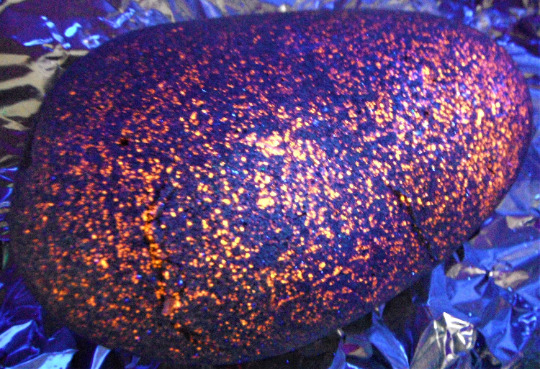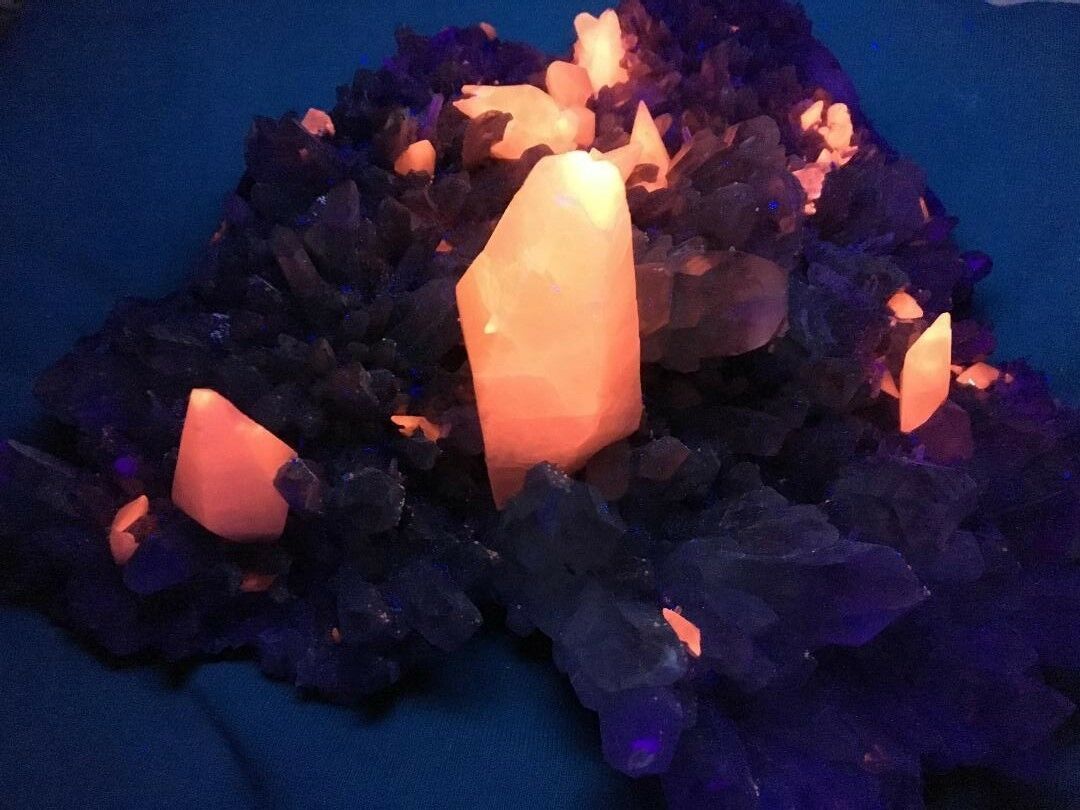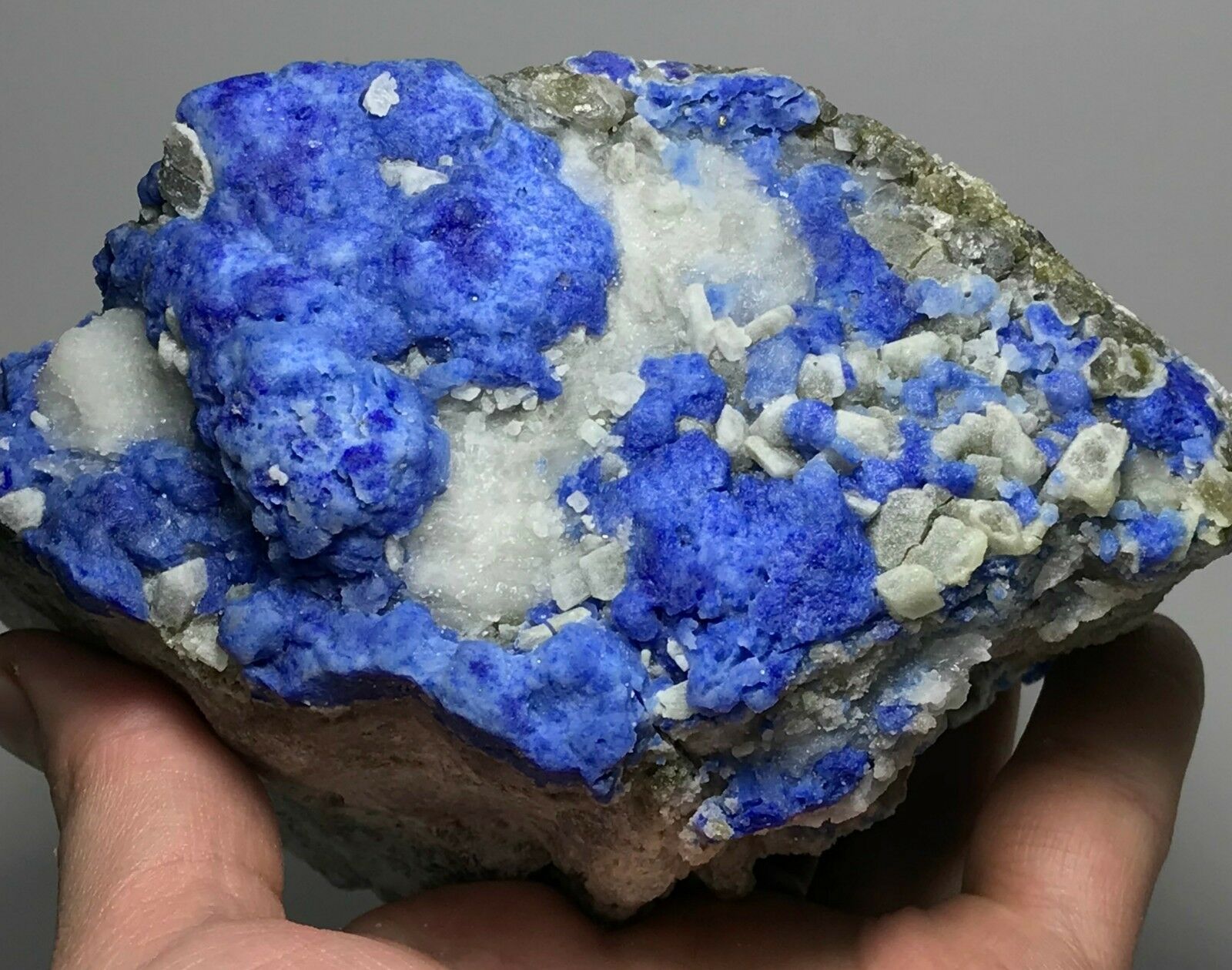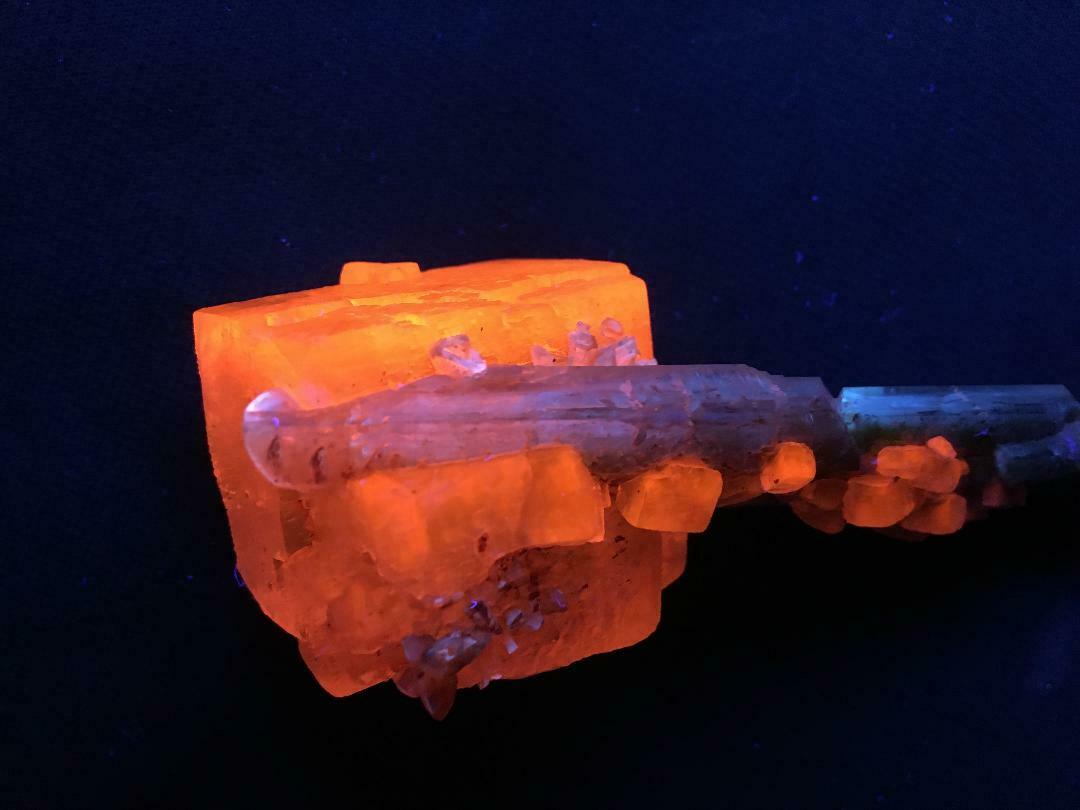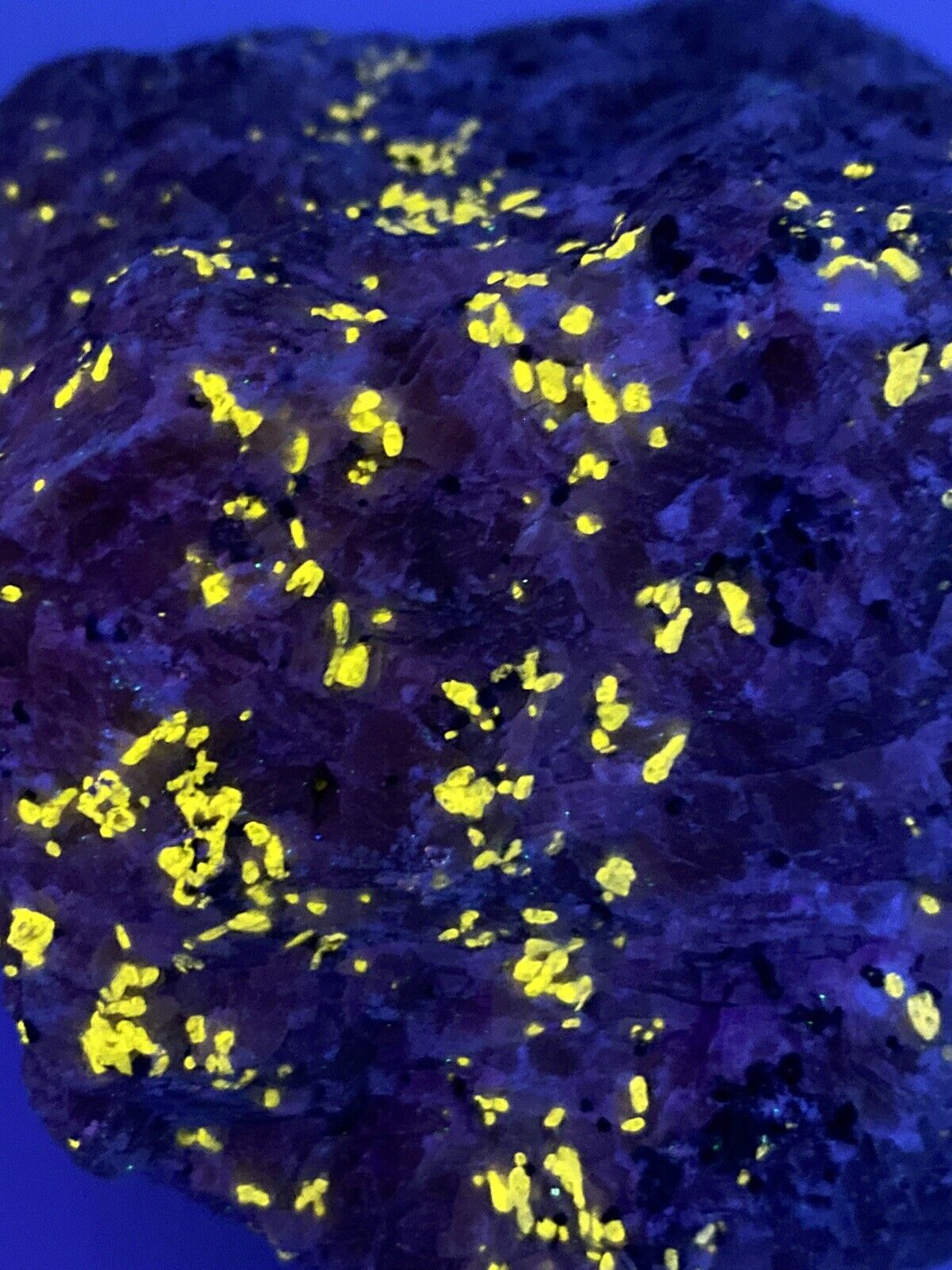-40%
Hardystonite, garnet, calcite - Franklin, NJ
$ 47.52
- Description
- Size Guide
Description
Here we have a small cabinet-sized specimen of hardystonite with willemite and calcite. The hardystonite makes up most of the matrix and has an off-white to pale pink color with a typical greasy luster. Next are spots, grains, and speckles of semi-vitreous, gray to white willemite in the matrix. The specimen's remainder has a few sections and grains of black, metallic franklinite along with semi-vitreous, yellow-brown garnet.The Franklin mine is the type locality for hardystonite. It was named in 1899 by John E. Wolff after Hardyston Township, Sussex County, locality of the Franklin orebody before the incorporation of Franklin Borough in 1913. Hardyston Township surrounds the borough of Franklin today. The Franklin mine is the type locality for clinohedrite, and it was named in 1898 by Samuel L. Penfield and Harry W. Foote from the Greek κλινειν "to incline and εδρα hedra, for face, for the characteristic inclined faces of the crystals. The hardystonite fluoresces a typical moderate violet-blue, the willemite a bright green, and the calcite a bright red, all best seen under shortwave (254nm) ultraviolet light. The daylight texture and color of this hardystonite are classic, while the mottled fluorescent texture of the calcite adds an interesting character to the fluorescent appearance of the specimen. There is a slight degree of oxidization that MAY be reduced or cleaned off using a solution of 50% hydrogen peroxide and 50% vinegar with timed immersions of thirty seconds and scrubbing with a stiff nylon brush and rinsing in plain water. If using this solution, caution is noted not to overdo using the solution least the calcite "chalks ." This is an excellent example of hardystonite with willemite and calcite from the Franklin mine. It is ideal for the fluorescent collector needing a good small cabinet-sized example of these fluorescent species. The specimen sits very well and displays optimally.
Dimensions are
9.7x6.6x5.4cm - 3¾x2½x2in.
Please note the centimeter cube and inch bar for scale.
Weight in grams and ounces:
384.8g - 13.57oz.
From the
Franklin mine, Franklin, NJ.
The previous collection this specimen was is #192, Roslyn Franklin.
#192 is the museum's Collection Sale number previously offered in the museum shop.
>>> We do
COMBINED SHIPPING
for multiple items. To
request
an invoice from us that combines shipping
ALWAYS
, click the
Add to cart
button on eBay to add items until you are done.
DO NOT PROCEED
to checkout; instead, click the
Request Total from Seller
button. <<<
=== There is an instructional video on how to request combined shipping is here
https://www.youtube.com/watch?v=FvDe7Fg7R4Q
===
All potential buyers need to be aware that being able to view fluorescent minerals requires an ultraviolet lamp. Most of the minerals from the Franklin and Sterling Hill zinc mining district fluoresce under
shortwave ultraviolet light
.
The shortwave wavelength is
254nm
or otherwise known as
UV C
. Always read the description carefully to determine if the main mineral of interest for a particular specimen will fluoresce.
ALL
fluorescent minerals depicted in our storefront are illuminated by two (2) 9 watt Triple short/mid/longwave AC Model 9SM-110 Way Too Cool LLC ultraviolet lamps, and the shortwave tubes and filters were replaced in late 2018.
There are several available brands and models of ultraviolet lights on eBay and other online sources. For further information on ultraviolet light and fluorescent minerals, copy and paste the following and go to >>>
geology.com/articles/fluorescent-minerals
.
>>>>
We Buy Collections
<<<<
DISCLAIMER: Every reasonable effort was made to identify the mineral species noted in each specimen accurately. The occasional label from previous collection(s) may misidentify some species, and the current title and description here reflect the latest mineral species identification.
A modest effort was made to depict a fluorescent specimen accurately as possible.
In some cases, overexposure should be expected in select photographs to compensate for a fluorescent specimen's weak response.
All buyers should exercise safe viewing practices regarding the use of ultraviolet light. Visual dark adaption is highly recommended in the optimal viewing of fluorescent minerals. Buyers should also be aware of what type of lighting to view the specimens under. This can result in perceived differences of color and contrast due to color and contrast shifting under various kinds of lights available.
All photographs were taken with a Nikon D5300 digital camera with a Nikon DX AF-S 18-55mm lens attached with a UV filter. Lighting was done with a pair of OSRAM 8.5 watt LED A19 5000K 800 lumens bulbs in brushed aluminum reflectors. The photographs were processed on a color-calibrated flat panel monitor. Do note the Imperial measurement conversion is the nearest equivalent to the listed metric measurement.
--- All photographs appearing on this listing or any other Franklin Mineral Museum listing are the property of the Franklin Mineral Museum. Photographs
can be used strictly for personal use onl
y
. Otherwise, the photographs posted here are protected by U.S. Copyright Laws. They are not to be downloaded or reproduced for public use or distribution in any way without the written permission of the Franklin Mineral Museum. ---











